Sandy Raper's Blog, page 2
November 3, 2020
Next Steps After Yoga Teacher Training
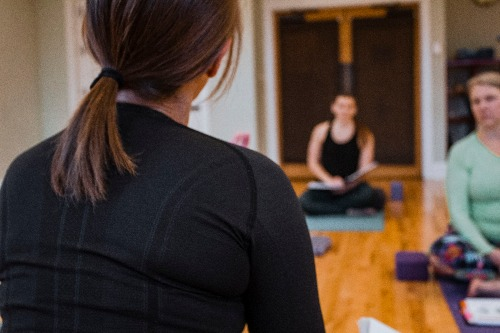
So, you’ve completed a 200-hour yoga teacher training program, Congratulations! Now what? What are the next steps towards building a strong teaching skillset that engages and invites others into an experience beyond the yoga asana? Sounds like a substantial commitment. Well, that’s because it is. It’s a worthy endeavor for you, as a new teacher, to invest time in and commit to within a skillfulness of action that takes place now beyond your yoga teacher training experience.
What’s next?Yoga teacher training programs should provide individuals with an opportunity to build a solid foundation on which they can then add the structural framework needed within the absorption and application of real-time teaching experiences. A 200-Hour training is just the beginning. A great start point. After completion of training, you will continue to learn, refine, and grow through the application of teaching.
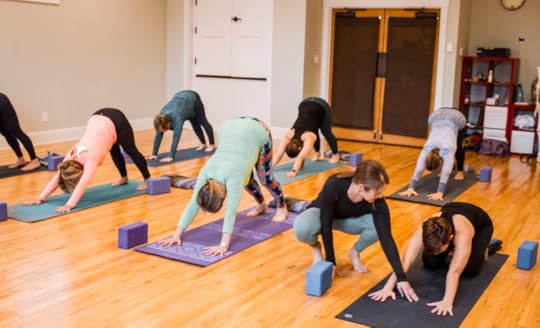 It is important that within the 200-hour training experience, some key concepts of support be initiated in order for a solid footing to be established. Below are a few key concepts that will help you get started on your teaching pathway. These concepts will also be supportive of your ability to build, support, and create longevity within your pathway of service as a yoga teacher.TEACH
It is important that within the 200-hour training experience, some key concepts of support be initiated in order for a solid footing to be established. Below are a few key concepts that will help you get started on your teaching pathway. These concepts will also be supportive of your ability to build, support, and create longevity within your pathway of service as a yoga teacher.TEACHYou will learn and develop as a teacher, through the very act of teaching. Practicing yoga and teaching yoga is not the same. Teaching yoga requires an entirely different skillset. It is important that yoga teachers begin teaching right away after they complete training in order to put into action all that was supported and learned with YTT. You can decide on what type of setting that will take place in. Be creative. Look around you and see where yoga classes are being offered and what type of class experiences are being offered. Check out class schedules at studios and gyms, community centers, and see where there is an opportunity waiting for you to make a connection and offer the wonderful practice of yoga within your community. Consider creating your own independent offering based upon the needs that you see around you. Look for opportunities where you can serve and will contribute towards your growth as a yoga teacher.
Hopefully, you were immersed heavily in practice teaching within your training experience so that stepping out to teach after the training will not feel foreign or like you’re just starting this process. Evaluate and reflect upon your teacher training experience. Evaluate how you showed up, how you contributed to your study and learning experience. Note which areas of study you feel you need to spend more time in absorption and application. All training programs will most likely tap into an overall study of topics but not all training experiences are designed or created equally with the same focus or emphasis. Depending upon the methodology and the teaching curriculum of the specific school that you received your training from, the focus may have been more heavily weighted in some areas of study than others.
Within the 200-Hour Yoga Teacher Training program that I offer, it is of the greatest importance, for me, that trainees are equipped with the tools and in-depth practice teaching experiences within the training so that they can step out, with confidence, into teaching positions right away upon completion of the training. This is a “deal-breaker” for me. This doesn’t mean that trainees feel completely at ease with teaching right away or that development is not required. I know that I have supported and equipped them throughout the training with a layered-learning approach that sets them up for success as a teacher when they put the teaching principles into action. There is still work to be done. Now it’s time to put the knowledge into action. Absorption and application of the knowledge gained from the training experience must be cultivated through the act of teaching where a teacher learns and understands better where their opportunities for refinement are needed and strengthened. So, teach!
“When you hear 200 hours, it sounds like so much time and so much preparation for becoming a teacher, but then you graduate. You realize that you have been given this beautiful gift of a foundation but you don’t have your house yet.” Dominique Davis
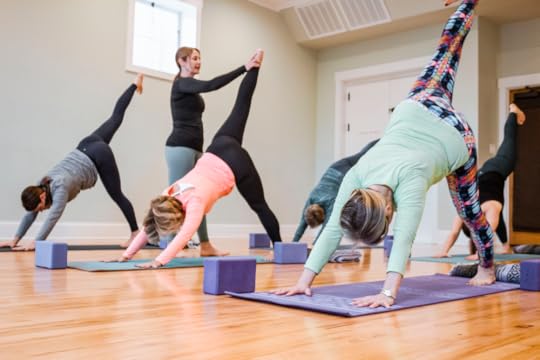 STRUCTURE
STRUCTURE
Once the foundation is set through teacher training, the teacher can then build a structure that supports the transformational experiences that their teaching will invite individuals into. A skillful sequencing model or approach is a necessity and provides the framework for each class that you will teach. This sequencing structure should have been a key piece of your training experience. If you do not feel that you have a deep understanding of how to sequence and organize a yoga class experience then that is going to be a requirement for you to cultivate and learn right away. This is very important and will have a huge impact on your ability to create sustainability and longevity along the pathway as a yoga teacher. Nothing is random when it comes to sequencing. As a movement-based teacher, within the yoga asana experience, it is very important that you understand how to lead others effectively through the vehicle of their bodies within this physical piece of the practice. Your understanding of this felt experience will be aided heavily by your continued commitment and understanding found within your own personal practice. To go along with your sequencing structure, you should have developed an understanding of how to use your language to lead and direct others towards their own empowered understanding and experience within the yoga practice. Your cues and directional language matters and will have a direct impact on the experience you offer as a teacher.
Another important aspect of being a movement-based teacher is to understand and learn the body and how it moves. Asana captures our attention within the physical body. It is a powerful limb of the practice and a tool for which a teacher uses to guide students towards the pursuit of moving towards the stillness found within. It’s important that we understand better the organization and actions found within the physical layer through learning anatomy and physiology. Why is learning anatomy important? Knowledge gained and implemented through the application will always add validity and strengthen your ability to lead and guide others effectively. Within the movement limb of the yoga practice, it is important that teachers are equipped in understanding how they will connect their students to their physical bodies in order to access the interior layers of their mental and spiritual bodies. As a yoga teacher, you will do this through the continual study of anatomy, as it applies with relevance within the yoga asana practice. This understanding will heighten and elevate the practice of awareness that you offer students through physical practice. Your understanding of anatomy is coupled with the skillful sequencing structure mentioned earlier. Through the development of a strong anatomy understanding and skillful sequencing, supported by language that leads, you will be equipped to safely guide students through a supportive and adaptive experience. In this way, your guidance and leadership will build and hold a space of trust for your students and from that trust, they will feel more confident to explore a yoga practice that fits and serves their individual needs.
 MENTAL VISION AND INTENTION
MENTAL VISION AND INTENTION Some yoga teacher training programs may not include information about what steps to take towards teaching after completion of the training. This is important information to inquire about as you explore and decide on which training program you will pursue. It is important that you ask questions as part of your preparation steps for beginning a 200-Hour training. It is also important to inquire about what topics will be covered to support and prepare you for seeking teaching positions beyond the training. You should feel well-informed and supported within the vision that you set for your training experience. Seek information and training programs that will support your intention for pursuing training and your vision for teaching afterward. Remember that your personal practice preference may not be an accurate reflection of the intuitive teaching style that you develop within the training or the class style you ultimately teach. Be open to possibilities that aren’t defined by your personal preference but are produced within your organic teaching skillset that is generated and cultivated.
In Episode 2 of my Beyond Yoga Teacher Training Podcast, I have a conversation with Dominique Davis, a fairly new yoga teacher. Dominique shared some great insight and advice on setting vision and intention around your teacher training experience.
Have an understanding of who you are, and how you want to teach before you enter into the training. Cross-train and experience various teachers, methodologies, and styles of yoga prior, during, and after training. Explore the teacher or yoga school that is offering the training that you are considering or enrolled within. If possible, practice with the teacher that you will be studying under. Explore their teaching style prior to the training. Check your energy when you are in practice under their guidance. How do you feel? Can you see yourself having a better, deeper, aligned understanding of how you want to teach through this training program? Do not take a yoga teacher training out of convenience. Humble your mind and heart towards others. Understand that the teacher trainer is not going to turn you into a teacher. You will need to put the work in to develop your own teaching skillset and style of teaching.Intentions and manifestations won’t change you as a person. Sometimes after graduating from a teacher training program, we expect our yoga career to simply appear. We still have to develop and create structure upon the foundation that has been created through the training program. You must do the work. Yoga teacher training is not meant for you to emulate others, or become a version of your teacher trainer. Others have done the work before you, now it's time for you to step out and start doing the work of understanding and exploring how you will create the class experiences that you will offer in your teaching.
Remember the 200-Hour Yoga Teacher Training is a place to begin. Now, it’s time to step towards becoming a yoga teacher and then towards growing and expanding beyond.

I created the BEYOND YOGA TEACHER TRAINING Podcast as a resource to support and inspire new yoga teachers and encourage those already along the teaching pathway. Tune in and listen to new episodes weekly. Sandy will share stories and practical teaching tips from almost two decades of teaching experience and invite great conversations with inspiring guests to support you in your yoga practice, your teaching pathway...and beyond!
Catch the latest episode on the Beyond Yoga Teacher Training Podcast:October 28, 2020
Trusting the Magic of New Beginnings
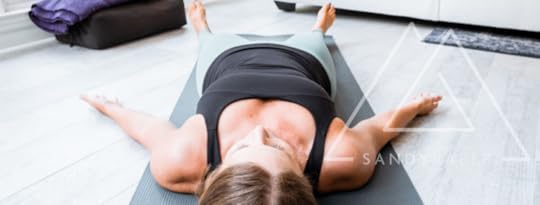 I read recently that growth emerges by coming to the end of something, and by beginning something else. Often times, an ending is the catalyst needed to launch us into the unknown of beginning again. I also believe there can be an element of continuation within our lives that sparks a new beginning to emerge and expand.
I read recently that growth emerges by coming to the end of something, and by beginning something else. Often times, an ending is the catalyst needed to launch us into the unknown of beginning again. I also believe there can be an element of continuation within our lives that sparks a new beginning to emerge and expand. I am a firm believer in the cycle and seasons found within life, circumstances and relationships. We have tendencies to create permanence in all areas of our lives, when in fact, change is the only constant. Some things, situations, and even people come into our lives for only a designated amount of time. I have found a peace and contentment within that mindset.
Why is it hard though to trust the magic of new beginnings? New beginnings and fresh starts are exciting, yet can feel terrifying at the same time. The magic of new beginnings comes to us through the spaciousness and mystery of the unknown. The space of not fully knowing yet where the new adventure will lead us or whether we even feel equipped to take that next step. A step most assuredly that will take us out of our comfort zones and launch us into the unknown of that new beginning.
Here’s where trust comes in. Trust and faith, I believe. Trusting in the waiting, the listening and the powerful invitation to move forward. Trusting that something is waiting, an opportunity to expand beyond our imaginations. This is where the magic comes in. It’s helpful to develop a growth mindset to be ready for these opportunities for new beginnings. To be ready for and equipped for what is certain, the various changes found within life and the expanded growth potential that awaits us. Growth that comes through knowing that we can begin again whether through transitioning, creating a continuation, or simply letting go in order to expand into a new experience.
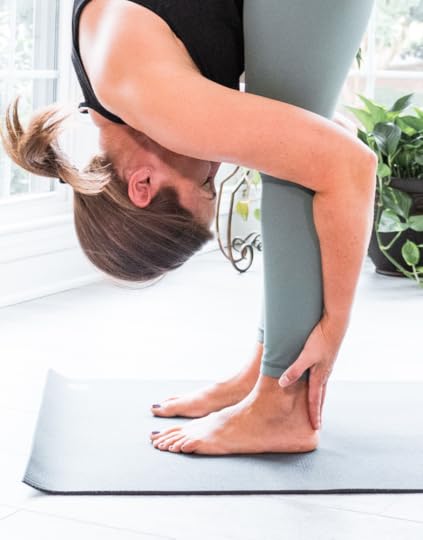 Here are a few helpful tips for cultivating a mindset ready for the adventure of a new beginning: CURIOSITY
Here are a few helpful tips for cultivating a mindset ready for the adventure of a new beginning: CURIOSITY Curiosity is a strong desire to know or learn something. It is a quality that we can cultivate just by initiating and taking those action steps towards the unknown of beginning or starting something new. Curiosity fuels our ability to trust and step out and step forward. Stepping out to explore, with a growth mindset to learn, and doing so before we even feel prepared or equipped enough to do so. Curiosity invites us into the magic that is waiting. The rush of expectation that comes from trusting that you don’t have to know it all to begin something new or create a new beginning in your life. And the ability to be in a new or expanded learning experience no matter what season of life you are in. I have experienced this action-led curiosity in my life and it has catapulted me into opportunities, experiences and connections that I would have never dreamt were possible if I hadn’t been curious enough to explore. I invite you to become curious. Curious to notice that which sparks interest, desire and deep spaces of joy, happiness and fulfillment. Listen to those promptings and explore the vastness of growth that is awaiting you just by being curious.
Better to have sought out to learn than to stay stagnate in a space that doesn’t provide nourishment and sustenance for your overall wellbeing and growth.
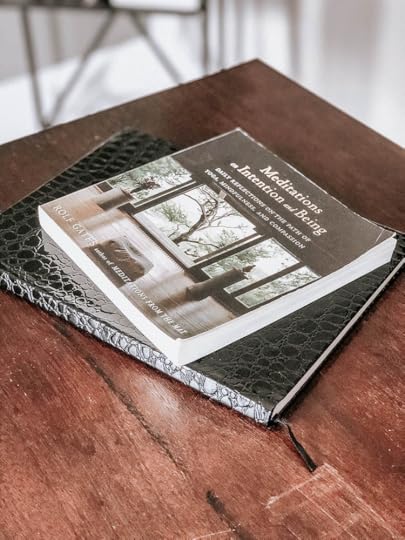 GET STILL
GET STILL“Be still and know”. Take time daily, or as consistently as possible, to get still and settle. Settle the anxiousness that arrives and arises when we feel something is ending, and we are fearful of the unknown. Fearful of a new beginning launching within our lives. This fear is that attachment piece again to permanence. This idea that change is not taking place.
We can use this tool of settling into stillness and grounding ourselves within our physical bodies to become present with the sensations of our breath and the sensations of information we receive in our body in our seat. Now this doesn’t mean that we are comfortable. Most likely, many days, we will feel uncomfortable. The focus is more on the noticing qualities and sensing what is present. Finding that contentment again to just being with what is, instead of feeling possibly saddened about what was, or anxious about the future. The invitation is to get familiar with what is presently, in that daily stillness practice.
Getting still gives us time to ground ourselves into what we do know in that moment. Stillness creates space for us to notice and then organize ourselves. Organize ourselves for whatever new adventure we may be pursuing. Getting still also allows us time to evaluate and listen inwardly to a trusting guidance for where and how we’ll take or next steps. Stillness invites us into inspiration and the manifestation of those curiosities I mentioned. Much of our life is lived in motion so intentional opportunities to get still becomes a requirement. We need this balance to support and maintain our overall wellbeing and ability to respond to the unknowns of life in a way that is helpful and allows us to grow.
Remember, change is the only constant. Nothing is permanent. We can create so much ease in our lives by noticing the imbalances and opportunities that are available for us to recalibrate our nervous system, which is where all of our movement and daily activities have there origins.
 AUTHENTICITY
AUTHENTICITY Let’s get real. New beginnings can either paralyze us or propel us forward. We can get stuck in the not knowing that causes us to not move forward. There’s a certain level of authenticity required to take action. We must be realistic with where we are, at that given time of our life. We must take inventory of our mindset and offer ourselves the grace and self-reflective opportunity of evaluation without judgment. Here is where the development of trust arises and the willingness to be in a new learning curve and cultivate qualities of being a life-long learner.
Cultivate a growth mindset. Take time to journal your heart’s desire and your fears, too. Journal the promptings that you receive in the still moments of your day. Become a listener to the intuitive space within and the inner guidance that is bigger. Be authentic and willing to ask others for help along the way. A valuable tool I have learned is to look to others who have already made their way along the path that you have freshly stepped onto. Look to those who inspire you to explore this new beginning in your life.
Seek guidance and wisdom from those who have already made a way. Be vulnerable in knowing that it’s okay to ask for help and seek encouragement and inspiration for this next part of the journey in your life. In turn, as you progress along, be watchful and attentive to see those individuals that you can inspire and reach out to help bring them along on their new pathway. This strengthens connection with others and forges bridges over those unknown territories that we will inevitably encounter and,
“suddenly you just know it’s time to start something new and trust the magic of beginnings.”

As I embark on a yet another new beginning within my yoga teacher career, I am excited to launch my podcast called the ,Beyond Yoga Teacher Training Podcast. Although I really don’t feel that anything has ended to spark this new beginning, I do feel like this is a continuation on my pathway for almost two decades now. I will turn the page to continue and explore this next chapter within the story of my life and yoga teaching experiences. I am excited to learn, to grow and be amazed by what is yet to come. And so, I will keep turning the pages and trust in the magic that is waiting for me there.
Catch the first episode on the Beyond Yoga Teacher Training Podcast:August 17, 2020
3 Practices for Finding Ease Within Daily Living
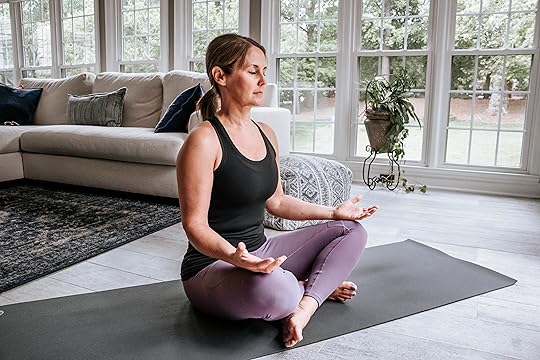
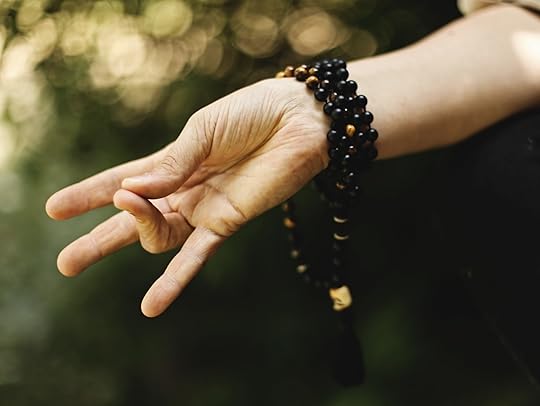
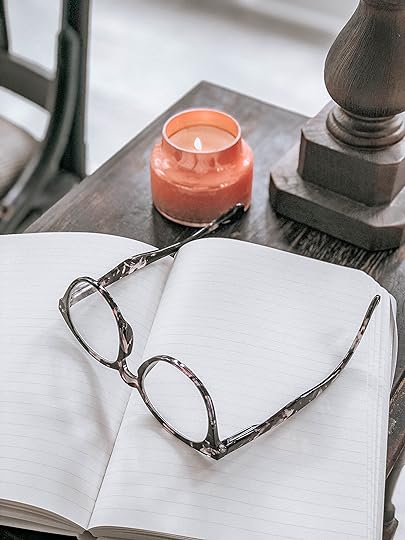
Choosing to find ease within your day will profoundly impact the reflection and response of life you will experience. You can consciously choose to set the tone of your day by incorporating a few simple (easily accessible) practices that will provide a powerful effect on your body and within your mind. These practices will prepare and equip you to release the stress and effort of the day and invite ease to rise up instead. Dedicate to the exploration of these practices choosing what you can commit to with consistency. You have the ability to cultivate ease and release of tension at any time throughout your day. Pause and reset. Release and find ease.
1. Begin the day with a few moments in stillness.In order to know and become comfortable with stillness, we must be intentional and practice stillness. Begin by creating consistency. Do what is possible daily and start by dedicating a minimum of 5 minutes daily to practicing stillness.
Sit in a comfortable seated posture where you can feel grounded. Create lift and extension within the spine to accommodate healthy posture by maintaining a slight anterior (forward) tilt within your pelvis.. Another option would be to sit in a chair where you can plant your feet connected to the floor. Whether seated on the floor or in a chair, be sure to support spinal integrity and healthy posture by lifting the spine up and out of your pelvis. This alignment will aid in the reducing compression within your lumbar (low back) region of the spine, in particular.
Once settled in a comfortable seat, create ease by connecting to the steadiness of your inhalations and exhalations. This awareness will connect and ground you in the present moment. Notice. Physically ground yourself into the present moment by becoming aware of the periphery of your body. Take a mental scan of your body. Start at your head and move your awareness down your cervical spine (neck region). Notice. Visualize and move awareness along your thoracic (mid-spine region), through the shoulder joints and down each arm into your hands. Travel awareness back into the spine and then move it along the lumbar (low back region) into the pelvis. From your pelvis, move through the hip joints into each leg, through the hip, knee and ankle joints, all the way to your feet. From your feet, travel your awareness back up through the pelvis, the spine and return and end the scan in your head.
Mentally notice each region and area of your body through the scan. Notice sensations that arise with focus and awareness through each region of the body. Notice without labels or judgments while being attentive to what you sense or feel. Notice for the intention of becoming aware to what is present and the experience of being present. While you are scanning your body, notice your breath and maintain a steadiness with ease creating a smooth inhalation and an extended exhalation.
Commit to 5 minutes daily. Commit to that which is obtainable with consistency.
Key points to remember:
Create a conscious easy seat Notice Create steady breath flow Body scan2. Choose a word, an affirmation or prayer.
Choose a word, an affirmation, or a one sentence prayer that you can repeat easily to yourself silently and repeatedly during your time of conscious stillness or sitting, Consider a seated position or recline into savasana (length of your mat with legs and arms extended away from the body). If choosing a reclined savasana position of stillness, place a blanket roll under your head and neck for support. Let your word, affirmation or prayer be used to create a soothing, meditative experience.
Consider connecting the word, affirmation or prayer to the movement of your inhale and length of your exhale. You can create this rhythm by taking a few moments to count your breath. Begin with a slow count of four on the inhale and match the four count on your exhale. You can move your count up to a six or eight count as you feel ready. The connection to your steady stream of breath will recalibrate your nervous system. Initiate balance between the "fight or flight", sympathetic nervous system, initiated when you inhale and the "rest and digest", parasympathetic nervous system, that is initiated on your exhalations. Also, consider adding the use of the Prana mudra by connecting your thumb with your ring finger. This mudra connection will activate dormant energy within the body and increase vital prana, or life force. The thumb represents fire and the ring finger is earth. This connection encourages the flow of energy making you feel energized and strong.
A powerful, energizing way to start the day!
3. Pause and Notice
Creating a routine for practicing stillness gives you the ability to pause and reset. Within the pause, you can begin to notice and become aware of what is emerging or surfacing within the first moments of stillness. This valuable time can help you set the tone and mindset for the day. A new beginning. Within noticing, we can release the need to create labels for what we are feeling or sensing. The fluctuations of thoughts and feelings can be recognized, noticed and then released without attaching any value to them. This practice will aid in cultivating a mental space of non-attachment, releasing the need to cling or attach permanence to that which is impermanent.
Consider extending these practices further by spending a few moments in daily journaling. Journal a few notes from your daily experience in stillness. Writing can become a therapeutic experience and aid in the cultivation and support of your health and overall wellbeing.
Don't complicate any of these practices. Consciously choose ease and then let the experience of ease guide you. #BeyondYTT #Yogi #YogaTeacherTraining #YogaJourney #Namaste #Sustainability #Longevity #YogaTeacher



